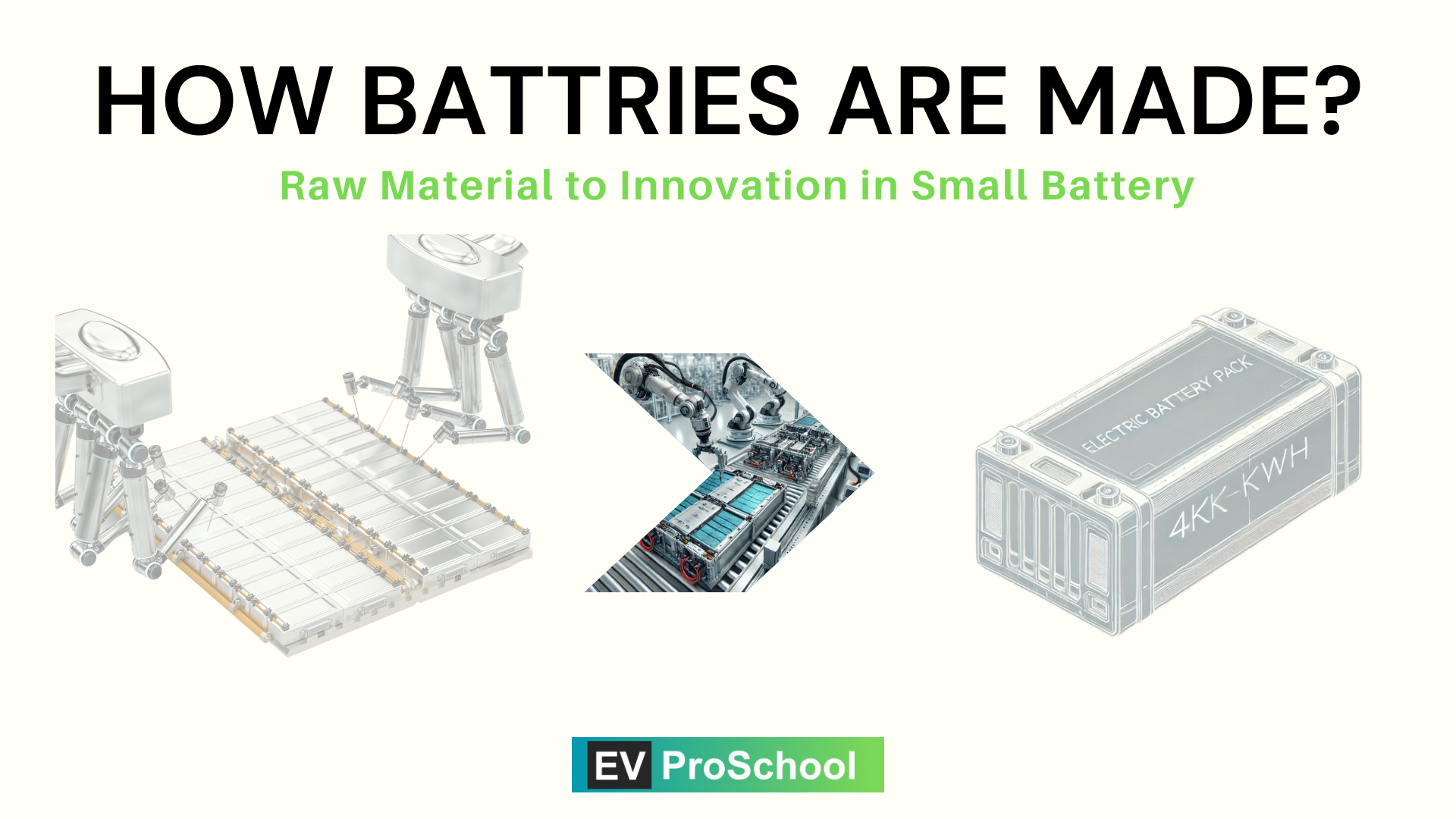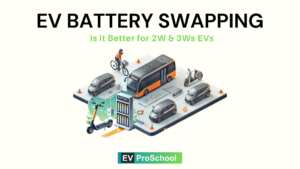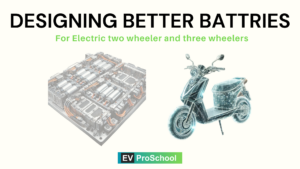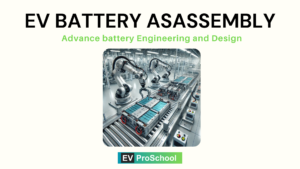Blog Post Strategy: “”
This blog post will focus on the manufacturing process of small EV batteries used in two-wheelers (2W) and three-wheelers (3W). The goal is to provide a step-by-step guide t o how these batteries are produced, covering the materials involved, the production processes, and quality control measures. The blog will emphasize the unique design and performance needs of 2W and 3W EVs, and how manufacturers address these requirements in the production line.

1. Objectives
Purpose:
- To educate readers about the entire manufacturing process of small EV batteries.
- To highlight the specific challenges and considerations involved in making 2W and 3W batteries.
- To provide insights into the materials, processes, and quality standards that ensure these batteries are reliable and efficient.
Target Audience:
- EV enthusiasts and potential buyers interested in understanding what powers their vehicles.
- Engineers, researchers, and students exploring small EV battery production.
- Industry professionals curious about quality standards and innovations in battery manufacturing.
SEO Focus Keyword:
“2W and 3W battery manufacturing”
Supporting Keywords:
- Small EV battery production
- 2W and 3W battery materials
- Lithium-ion battery manufacturing process
- Battery quality control for 2W/3W EVs
2. Blog Outline
Title Options:
- Main Title: How Are Electric 2W & 3W Batteries Made?
- SEO-Friendly Title: Inside the Manufacturing Process of 2W and 3W EV Batteries
Introduction: Building the Power Behind Small EVs
- Hook:
“From your electric scooter to the e-rickshaw you see on city streets, the batteries powering these vehicles are engineering marvels. But how exactly are they made?” - Set the context: Small EV batteries are designed for efficiency, durability, and affordability, making them crucial for urban mobility and last-mile delivery.
- Preview the blog: “This post walks you through the journey of a 2W/3W EV battery, from raw materials to the finished product, highlighting the processes and technologies that ensure their performance and safety.”
Section 1: Materials Used in 2W & 3W EV Batteries
1. Lithium-Ion Chemistry
- Lithium-Ion Batteries dominate small EV applications due to their:
- High energy density for long range.
- Lightweight design for compact vehicles.
- Long lifespan compared to lead-acid alternatives.
2. Cathode Materials
- Common options:
- NMC (Nickel Manganese Cobalt): Balances energy density and safety.
- LFP (Lithium Iron Phosphate): Known for thermal stability and lower cost.
3. Anode Materials
- Typically graphite for high conductivity and energy storage.
4. Electrolyte and Separators
- Electrolytes facilitate ion movement between cathode and anode, while separators ensure safety by preventing short circuits.
- Visual Idea: A diagram of a lithium-ion battery cell, highlighting the key materials (cathode, anode, separator, and electrolyte).
Section 2: The Production Process of 2W & 3W Batteries
1. Electrode Preparation
- Coating: Cathode and anode materials are coated onto thin metal foils.
- Drying: Removes solvents from the coating to ensure uniformity.
2. Cell Assembly
- Stacking/Winding:
- Stacking for prismatic/pouch cells.
- Winding for cylindrical cells (common in 2W batteries).
- Encapsulation: Assembled cells are enclosed in protective casings.
3. Electrolyte Filling
- Electrolyte is injected into the cell, followed by a sealing process to prevent leaks.
4. Formation and Aging
- Formation Cycles: Cells undergo charge-discharge cycles to stabilize their chemistry.
- Aging: Cells are stored under controlled conditions to ensure performance over time.
Section 3: Designing Batteries for 2W & 3W EVs
1. Compact and Lightweight Designs
- Small EV batteries are engineered to minimize weight while maximizing range.
- Modular designs make them easy to assemble and replace.
2. High Cycle Life
- Batteries are designed to handle frequent charging and discharging, critical for vehicles used in delivery or passenger transport.
3. Safety Features
- Include thermal management systems, fireproof casings, and pressure release valves to ensure safety.
Section 4: Quality Control in Battery Manufacturing
1. Testing for Performance and Safety
- Key tests include:
- Capacity Testing: Ensures the battery meets energy storage standards.
- Thermal Testing: Validates performance under extreme temperatures.
- Cycle Testing: Checks the lifespan of the battery under repeated usage.
2. Certification Standards
- Batteries must comply with global safety and quality standards like:
- UN 38.3 for transportation safety.
- BIS certification (India) for product quality.
3. Automation and AI in Quality Control
- Use of AI-powered inspection systems to detect microscopic defects in cells and components.
Section 5: Innovations in Small EV Battery Manufacturing
1. Solid-State Batteries for 2W/3W EVs
- Emerging solid-state batteries offer better safety, higher energy density, and faster charging.
2. Recycling-Friendly Designs
- Manufacturers are adopting designs that make it easier to disassemble and recycle old batteries.
3. Localized Manufacturing
- Regional production hubs reduce costs and ensure supply chain resilience (e.g., India’s push for local lithium-ion battery factories).
Conclusion: Powering the Future of Small EVs
- Recap the key points: From the raw materials to the final product, manufacturing 2W and 3W EV batteries is a complex process that prioritizes performance, safety, and affordability.
- Highlight the importance of innovation in small EV batteries to drive sustainable urban mobility.
- End with a call-to-action:
“Curious about advancements in EV batteries? Explore our other guides on battery efficiency, safety, and the latest technologies shaping electric mobility.”
3. Writing Style and Tone
- Tone: Informative and accessible, balancing technical depth with simplicity.
- Use real-world examples and comparisons to engage readers:
- “Think of the battery as the heart of your EV. Every step of its manufacturing is designed to ensure it beats efficiently for years to come.”
4. Suggested Visuals and Graphics
- Diagram: The internal structure of a lithium-ion battery cell (cathode, anode, separator, electrolyte).
- Flowchart: Step-by-step battery production process (electrode preparation, cell assembly, electrolyte filling, etc.).
- Infographic: Key materials used in 2W and 3W batteries and their roles.
- Real-World Example: Images of 2W/3W battery production lines with automated systems.
5. SEO Optimization Strategy
Focus Keyword:
“2W and 3W battery manufacturing”
Supporting Keywords:
- Small EV battery production
- 2W battery manufacturing process
- Materials used in small EV batteries
- Quality control for EV batteries
Meta Description:
“Explore the manufacturing process of 2W and 3W EV batteries! Learn about the materials, production steps, and quality control measures that ensure safe and reliable batteries for small electric vehicles.”
Alt Text for Feature Image:
“Diagram showcasing the production process of 2W and 3W EV batteries, from materials to quality control.”
6. Blog Length and Target Audience
- Word Count: 1,800–2,200 words for a comprehensive overview.
- Target Audience: EV buyers, enthusiasts, engineers, and professionals interested in small EV battery production.
This strategy ensures the blog post provides fresh and practical insights into the manufacturing process of 2W and 3W batteries, addressing the needs of the target audience while maintaining SEO relevance.



